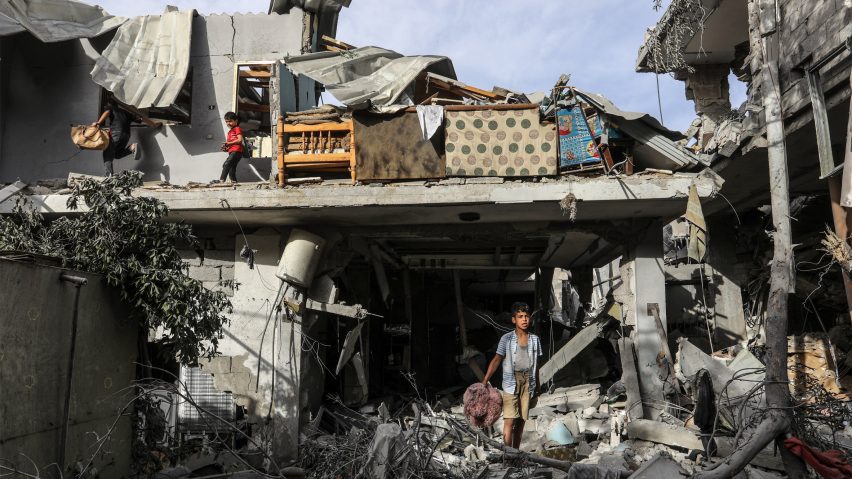
Palestinian architects are "banging on the door" to get into Gaza
As the majority of Gaza's buildings lie in ruins due to ongoing Israeli strikes, architects from across Palestine are trying to gain access to the blockaded territory to support Gazans in starting to rebuild their homes and neighbourhoods.
"We have been banging on the door to get in since November," said Nasser Golzari and Yara Sharif, partners of London firm Golzari NG and founders of Architects for Gaza. "As soon as there is a window, many of us will try to get in."
"The focus these days is mainly on letting in medical practitioners because there is a huge demand and need for them," added Palestinian-American architect and Harvard fellow Salem Al Qudwa, who has been looking for an aid organisation to get him into Gaza since the start of the war.
"Hopefully the next phase will be the reconstruction experts."
"It's their home and it's their right"
Their aim is to avoid reconstruction becoming another thing imposed on locals following the last eight months of war and 57 years of Israeli occupation.
"We think the reconstruction has to take place not only with major involvement and led by Palestinians but actually led by the families of Gazans who have lost their homes, lost their cities, lost their streets and their neighbourhoods," Golzari said.
"In the case of Gaza, it is so important that it is they who are doing it because it is their land, it's their home and it's their right."
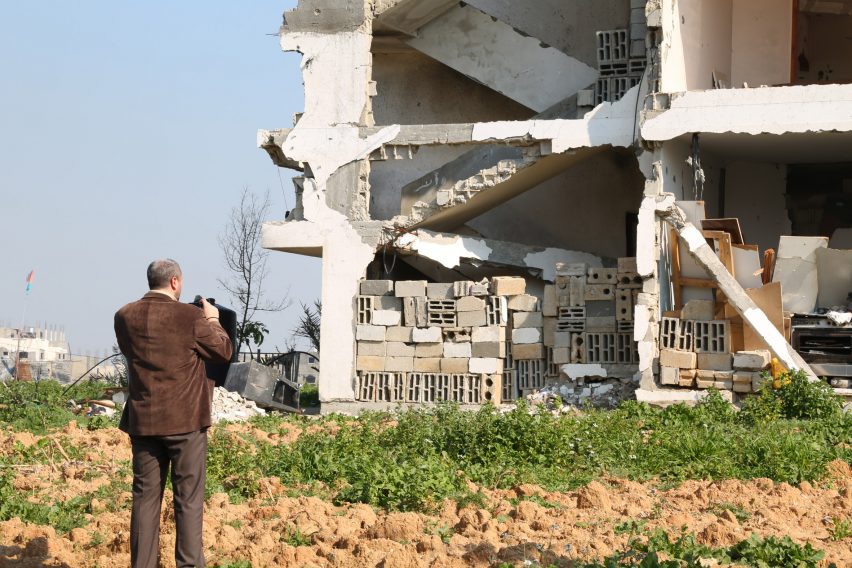
"The vision has to come, first of all, from the community on its own terms," agreed Senan Abdelqader, founder of Jaffa studio Senan Architects, who has stopped publishing his commercial work since the start of the most recent war and says he is ready to abandon it completely to help the rebuilding effort.
"I wish to have the opportunity to take part, not to come from above and to tell the people how to live," he said.
"I want to get the programme from them and deploy my architectural knowledge as part of this process, not to take control."
Destruction not seen since world war two
Israeli strikes have destroyed or damaged more than 62 per cent of all homes in Gaza along with 56 schools and 31 out of 36 hospitals since the most recent escalation of the decades-long Israel-Palestine conflict, following an attack by Hamas militants on 7 October.
Such extensive destruction of civilian homes hasn't been seen since the second world war, according to the United Nations (UN), displacing 85 per cent of Gaza's entire population – some 1.9 million people – while more than 37,000 people have been killed.
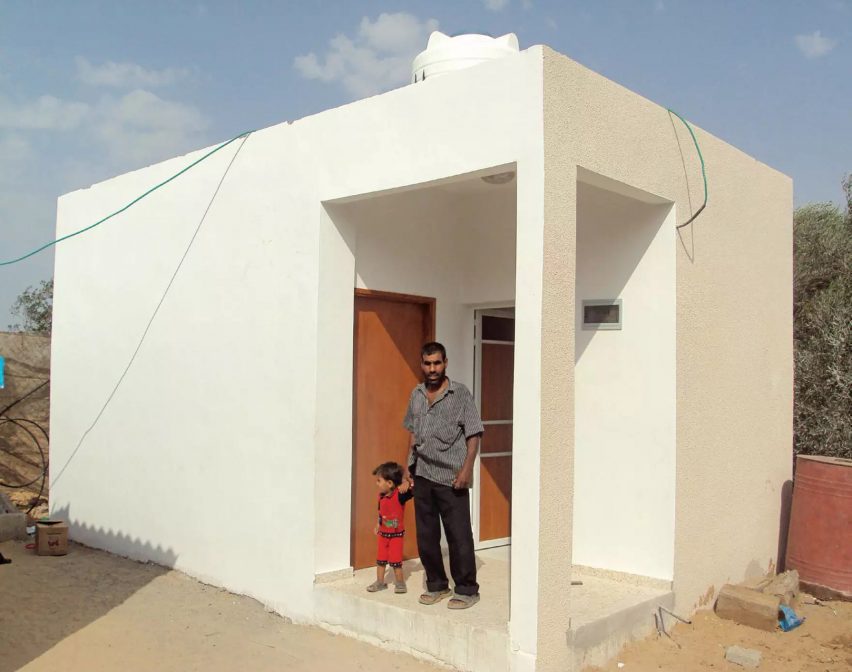
The home of Sharif's grandparents – a traditional Gazan courtyard house overlooking the sea – is among the 290,820 housing units that have been destroyed so far.
"We lost 40 family members, but the house is equally precious as the people we've lost," Sharif said. "Every person in Gaza has a story."
"There are a lot of Palestinian cities and villages and cultural landscapes being destroyed, whether it is the stone terraces, heritage buildings or the olive trees, which for me constitute a very significant part of the Palestinian landscape."
Gazans face "endless cycle of destruction and reconstruction"
The UN Security Council passed a resolution backing a three-stage Gaza ceasefire plan on Monday, inspiring hope that an end to the war might finally be near.
But once the bombing stops, the people of Gaza will be left to contend with another challenge: rebuilding their home from more than 37 million tonnes of rubble.
The blockaded territory has seen five wars since 2007. But this time around the wreckage is so extensive that it will take until at least 2100 to rebuild the destroyed housing units if reconstruction progresses at the same pace as it did previously, a recent UN report found.
"We are facing this endless cycle of destruction and reconstruction, again and again," said Al Qudwa, who has helped with several rebuilding efforts since 2006. "So reconstruction and destruction are happening at the same time."
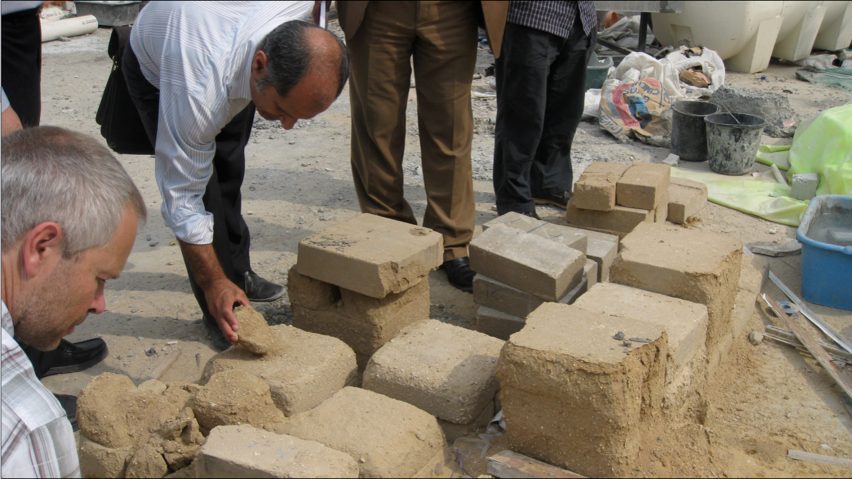
Since Israel placed Gaza under a blockade in 2007, these rebuilding efforts have moved at a glacial pace as Israel restricts construction materials such as steel and cement from entering the territory.
After the most recent war in 2021, only 200 out of 1,700 destroyed housing units were rebuilt a year later.
"There are so many constraints at the practical level like the scarcity of resources and the siege," Golzari said.
"So agreeing to a ceasefire is one thing but actually being able to go and do things is another, especially if one's intention is to build from within, to build with the families."
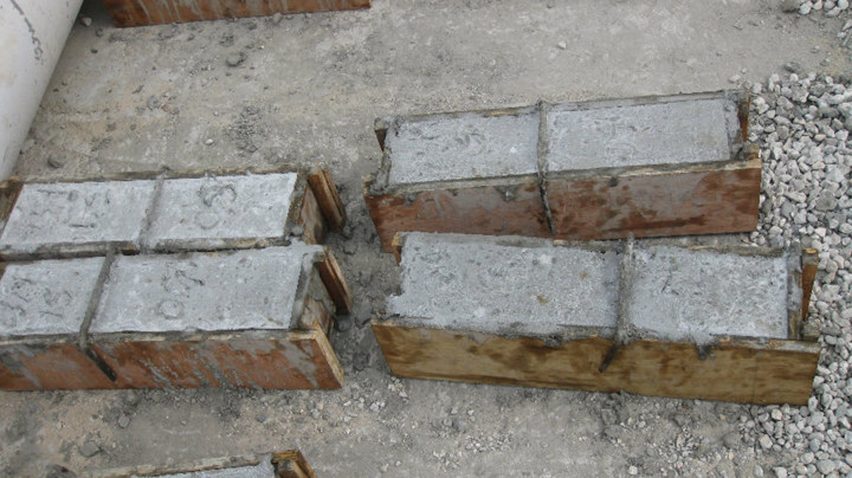
During previous reconstruction efforts between 2009 and 2011, this led Sharif and Golzari to start experimenting with locally available materials like earth and rubble, while Al Qudwa was using building materials smuggled in through the tunnels connecting Egypt and Gaza to help rebuild more than 160 housing units with the Islamic Relief charity.
"We couldn't help it," Al Qudwa said. "At the end of the day, there was a serious need. There were thousands of families looking for a decent shelter to live in."
Imposing reconstruction schemes "a big problem"
Big rebuilding projects that do happen in the blockaded territory are almost inevitably reliant on foreign aid and investors, meaning they frequently neglect the real needs and voices of the Gazan people.
"There is a big problem that we've been fighting against, and that is the imposition of reconstruction schemes from above," Golzari explained. "The big boys come from abroad, from outside, often from the Global North and design 'alien' architecture from their offices with no relationship to the cultural and social context."
"The Saudis came and built a neighbourhood, which was referred to by the locals as the Saudi neighbourhood," Sharif added. "Or there was the Kuwaiti neighbourhood. They looked like the building typologies in a different part of the world. So they were very alien, very irrelevant."
Already, economic development agencies from Europe and the US have started setting out plans for how Gaza should be rebuilt.
All too often, these kinds of organisations – and international architects, too – see Gaza as a testing ground for experimental solutions, Al Qudwa argues.
"Everyone is trying to be involved, everyone's trying to do their part," he said. "But we are still lacking the local knowledge. That's why architects are coming in with copy-paste solutions: 'we did this kind of design in Haiti or Honolulu or Bangladesh or Somalia so it might fit Gaza'."
"Sadly, shelter solutions are being treated like food parcels: take it or leave it. If you are willing to leave it, I have thousands in front of me standing in line to get that food parcel."
"Self-help" architecture promises an alternative
Despite being Palestinians themselves, architects like Al Qudwa, Sharif and Abdelqader say even they don't feel qualified to design buildings for Gaza without involving locals.
"To have a vision for a community that I'm not involved with directly just doesn't sit right with me," said Abdelqader, who is a professor at the Bezalel Academy of Arts and Design in Jerusalem.
Instead, they advocate for a "self-help" approach that involves giving people the tools and knowledge to reconstruct their own buildings in a way they deem fit, rather than dictating a scheme from above.
Over years of interviews with locals during previous rebuilding efforts, Al Qudwa has developed a method that involves completing partially damaged homes by adding a new, separate unit containing any "essentials" that were lost such as a small kitchen, bathroom or bedroom.
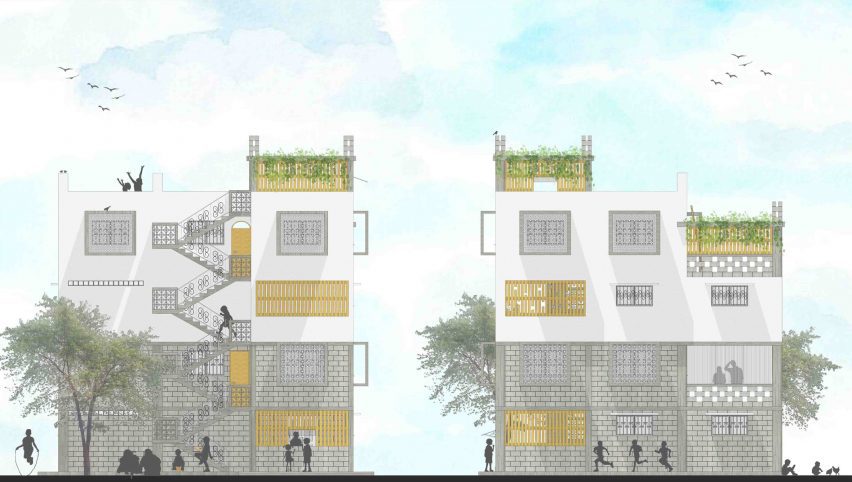
This minimalist approach gives Gaza's extended, multigenerational families room to grow, change and appropriate the structure over time.
"I keep the emphasis on finishing the partially affected units in order to get displaced families into a physical structure as soon as possible," said Al Qudwa, who is set to lead a reconstruction team for engineering and disaster management firm Miyamoto International once the borders open.
"You are simply giving them the hard half, strong foundations, strong columns, and then you are empowering them to fill the space in between the initial unit and the newly added unit," he added. "The family itself will keep adding and adding, filling the gaps either horizontally or vertically."
Similarly, Sharif and Golzari aim to set up a hybrid healthcare clinic and classroom as soon as a ceasefire is agreed, showcasing DIY construction techniques developed by locals since the start of the blockade.
Patients waiting to be seen by a doctor could pick up these rebuilding techniques with very little additional information, the duo argues, and adapt them to rebuild their own homes.
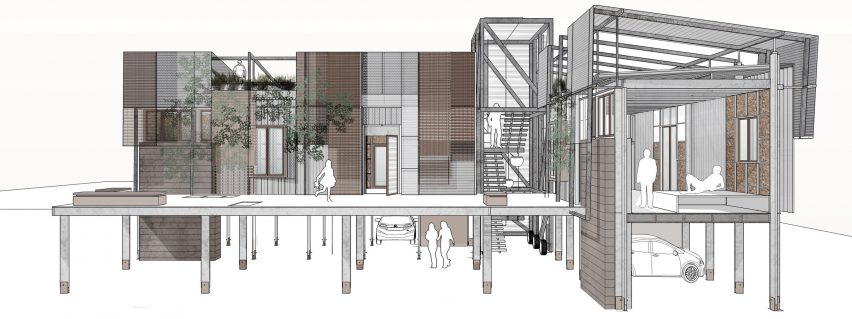
"When we first went to Gaza together under the reconstruction in 2010, it became quite clear to us that the people of Gaza are so innovative in terms of reconstruction and building techniques," Golzari said.
"The idea of self-help is one of the most practical or relevant things one could do because it creates conditions for locals to reappropriate and build upon."
The main photo by Anas-Mohammed via Shutterstock shows children in a destroyed house in Rafah following an Israeli air strike in April 2024.
Comments have been turned off on this story due to the sensitive nature of the subject matter.